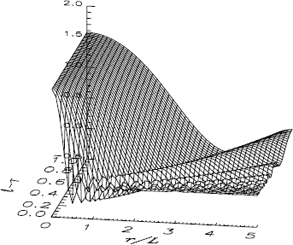
Chapter 4
Green’s Functions for the Wave Equation
In Chapter 3, we showed how Green’s functions could be used to solve initial- and boundary-value problems involving ordinary differential equations. When we approach partial differential equations, similar considerations hold, although the complexity increases. In the next three chapters, we work through the classic groupings of the wave, heat and Helmholtz’s equations.
Of these three groups, we start with the wave equation
where ∇ is the three-dimensional gradient operator, t denotes time, r is the position vector, c is the phase velocity of the wave, and q(r, t ...
Get Green's Functions with Applications, 2nd Edition now with the O’Reilly learning platform.
O’Reilly members experience books, live events, courses curated by job role, and more from O’Reilly and nearly 200 top publishers.

